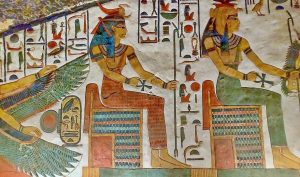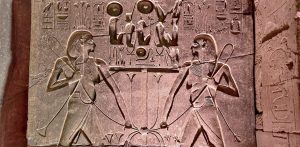History and Facts about the Red Sea
The Red Sea’s maximum breadth is 355 kilometers, its maximum length is 2,250 kilometers, and its water volume is 233,000 kilometers. Around 2500 BC, the first expeditions to the Red Sea began. Darius I of Persia made the Red Sea his navigation project in the 6th century BC. After two centuries, Alexander the Great resumed the exploration process, dispatching naval expeditions to exploit the Red Sea’s resources. Since then, the Red Sea has played an important role in trade and connecting countries over the centuries, up to the present day.
The Red Sea’s weather
The climate around the Red Sea is hot in the summer and frigid in the winter. The average temperature of the sea is 22 degrees Celsius. In the winter, the temperature can reach 28 degrees Celsius, while in the summer, it can reach 34 degrees Celsius. The climate is influenced by two monsoon seasons: the northeasterly and southwesterly monsoons.
Location of the Red Sea
The Gulf of Arabia, often known as the Arabian Gulf, is a seawater entrance of the Indian Ocean located between Africa and Asia. It is approximately 2200 kilometers long and 330 kilometers wide. Many ships pass through the Red Sea because of the Suez Canal, which connects the Red Sea to the Mediterranean Sea and Bab El-Mandab. There are numerous Red Sea ports, including Jeddah, Suez, Safaga, Aqaba, Eilat, Port Sudan, and others. More than 1000 distinct fish species and 200 hard and soft corals can be found in the sea. Egypt, Saudi Arabia, Sudan, Yemen, and Israel are among the countries bordering the Red Sea.
The Red Sea’s Economic Aspects
Petroleum deposits, evaporate deposits, sulfur, phosphates, and heavy-metal deposits are the five major categories of resources found in the Red Sea.
Navigation: The Red Sea is tough to navigate. The Bab El-Mandab strait and the Suez Canal are both kept open for shipping. The navigational difficulties are exacerbated by the unpredictable water currents.
- According to CEDAM, the northern section of the Red Sea is one of the world’s seven underwater wonders (Conservation Education Diving Awareness and Marine).
- There are about 1200 fish species and 250 distinct varieties of coral in this area. Entire fish and coral species are indigenous to the area, with 17 percent of fish and 8% of coral species being endemic.
- It is the world’s northernmost tropical sea, as its waters straddle the Cancer Tropic.
- The region around this magnificent sea is one of a kind, with outstanding marine life beauty.
- It is home to approximately 25 islands, including Tiran, Giftun, the Brother Islands, and others.
- The Red Sea’s shoreline is shared by nine countries.
- The water temperature reaches a maximum of 30 degrees Celsius and a minimum of 20 degrees Celsius.
The Red Sea’s Importance in Ancient Egypt
This fantastic sea shaped Ancient Egypt’s life and history and influenced the way people lived and thought by providing a variety of facilities and opportunities, including Transportation: Because sea transportation is easier than land transportation, civilizations with direct access to water had an advantage in terms of trade, scientific advancements, and cultural concepts. Egypt was able to gain access to Africa and the rest of the globe thanks to the Red Sea. The stability of the geographical position was one of the factors that aided the emergence of Ancient Egyptian civilization. It was the reason for the agricultural system’s stability. Egypt would have been isolated if not for the Red Sea, and there would be no technical advancement or stability. Cultural Exchange: The Red Sea not only gave access to Africa and the east, but also aided in the exchange of items other than goods. It aided the ancient Egyptians in their cultural and intellectual exchanges with various civilizations and countries.
What is the Red Sea’s claim to fame?
- The Red Sea is known for its one-of-a-kind, magical diving locations.
- It is a popular place for scuba diving and snorkeling, which many tourists love to do while on vacation in Egypt.
- It contains around 1200 fish species, including 44 sharks, making it the finest venue to learn about marine life.
- Hurghada, Marsa Alam, Sharm El-Sheikh, Thistlegorm Wreck, Dahab Blue Hole, the Brothers, Fury Shoals, and El-Phinstone Reef are among the top diving spots in the Red Sea.
- The World’s Fastest Fish: The world’s fastest fish, the “Sailfish,” lives in the Red Sea and swims at over 68 miles per hour, attracting travelers from all over the world to experience such beauty.
- The Egyptian government has safeguarded several of these beautiful coral reefs as part of Ras Mohammed National Park. These coral reefs run the length of the coast for more than 1240 kilometers.
- Lost Shipwrecks: Fish isn’t the only item you’ll find beneath the surface of the Red Sea. There are numerous shipwrecks beneath the surface, the most notable of which is the SS Thislegorm, which was sunk by German aircraft during World War II.
Nothing compares to exploring ancient Egypt’s heritage and legacy, where history was formed in this timeless and immortal place. You will enjoy a paradise surrounded by everything you can imagine from a fascinating place that exhibits mind-blowing historical facts, magnificent locations, and the most entertaining activities at the most inexpensive costs through our Egypt holiday packages.






